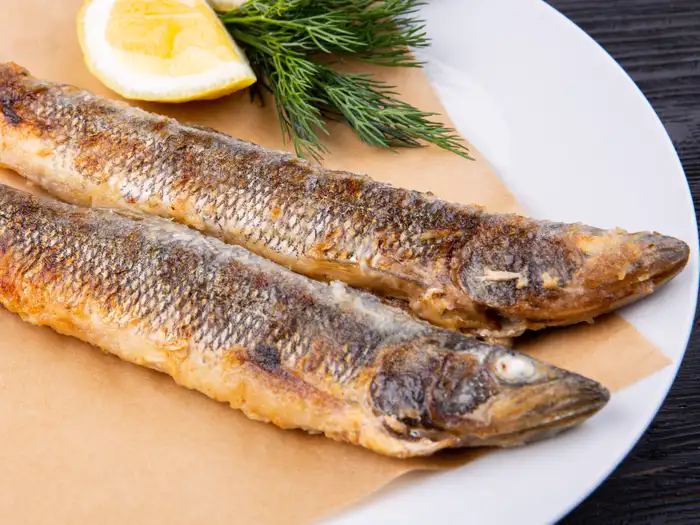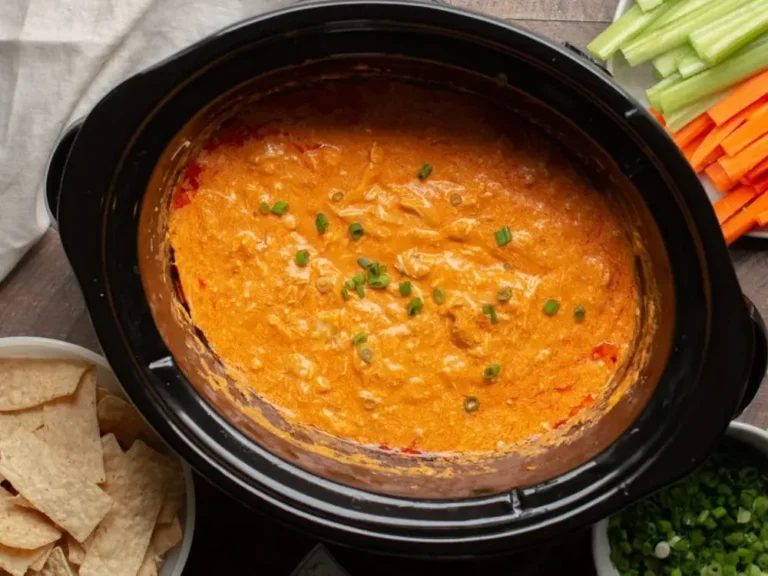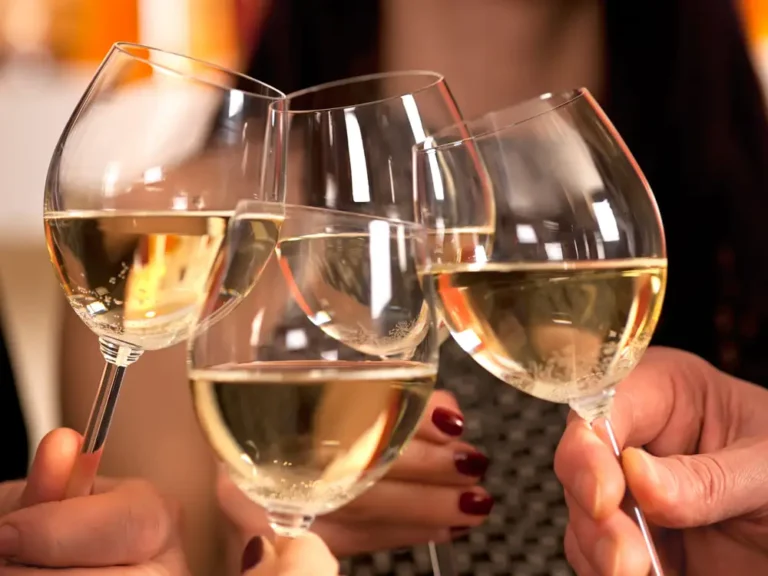We tried $40 martinis in LA, NY, and SF. They’re the epitome of loud luxury, but not all lived up to the price tag.

Upscale martinis are becoming the norm at bars across the US.
A martini is one of the simplest cocktails there is — it’s just vodka or gin (depending who you ask) and vermouth — and yet bars in various US cities are adding their twist to it by adding foraged ingredients or serving it with a side of caviar, turning a classic drink that can be ordered at most local bars into a luxury experience.
Martinis priced from $30 to $150 or more have been increasingly popping up on menus and are perfectly suited to the loud luxury trend. Unlike quiet luxury, which involves being more subtle with how much you’re spending, loud luxury means splurging and not being afraid to show it.
Cue: fancy drinks served on special little trays with sides like caviar that turn heads as they move through a bar or restaurant.
“Yes, it is a luxury martini, and what really makes it luxury is the caviar-stuffed olive on the side,” Trevin Hutchins, a bar director at San Francisco’s Aphotic, which sells a $30 martini and makes the cocktail tableside, told B-17. “Otherwise, it’s a pretty classic martini.”
B-17 tried five martinis in Los Angeles, San Francisco, and New York, ranging from $30 to $52, and was surprised to find that some actually warranted the price tag.
Dante, Los Angeles: $52

The pricey martini at Dante in Beverly Hills came with a good amount of caviar
In Los Angeles, we went to the fancy side of town to try the Caviar Martini at Dante, the West Coast outpost of the long-standing New York City café and craft cocktail bar. Located on the rooftop of the Maybourne Beverly Hills Hotel, Dante is the kind of place you’d expect to get fancy cocktails.
The menu description for the $52 Caviar Martini included Grey Goose, toasted rye, white peppercorn, dolin blanc, bitters, and 14 grams of caviar. It was served on a pretty silver tray with a small tin of Calvisius caviar over ice and five blinis — tiny pancakes often served with caviar.
Dante told B-17 that the martini was “based on the Russian tradition of enjoying ice-cold vodka alongside caviar.”
The drink tasted a little sweet with a malty flavor, unlike a traditional martini — but it was really good and came with a pleasantly surprising amount of delicious caviar, making the price seem justified.
Overall, the drink was a genuinely fun, luxurious treat and seemed worth the price.
Saltie Girl, Los Angeles: $35
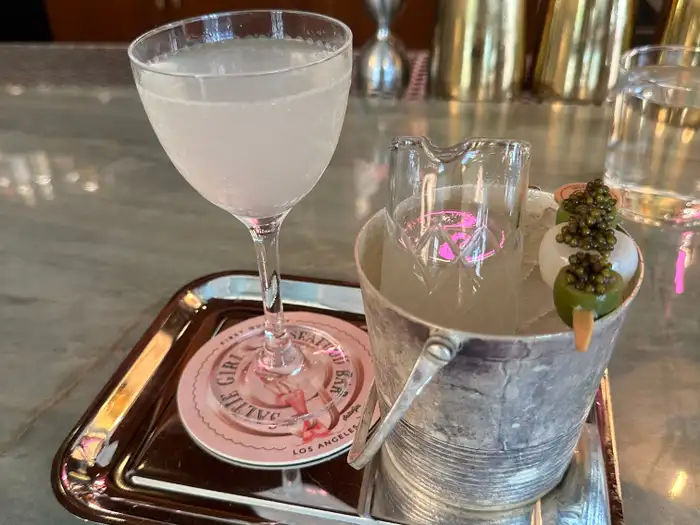
The Saltie martini at Saltie Girl came with a little bit of caviar with pickled onion and an olive.
At Saltie Girl, the Los Angeles outpost of a popular Boston seafood spot, we tried their namesake martini, the Saltie, which is listed on the menu for $35. The menu description is simple: choice of vodka or gin, Castelvetrano olive, pickled onion, and caviar.
We went with gin and were served a classic martini and sidecar on a shiny silver tray and a toothpick with the olive and onion, each with tiny dollops of caviar.
The martini itself was solid, but the accompaniments were a bit underwhelming. Serving the caviar on the onion and olive took away from its taste.
We were also unknowingly upsold. After choosing gin, the bartender asked what kind and listed a few options, including Monkey 47, which we chose. It turned out that made the martini $47 instead of $35. It seemed strange not to have a set list of ingredients for drinks sold at that price point, which should, in theory, reflect the price of the ingredients used.
All in all, this one looked a bit more luxurious than it actually was, and might not be worth it for most people. A better option would be to go for a regular martini and order the Saltie Girl caviar separately if you really wanted some, or just some tinned fish.
Aphotic, San Francisco: $30

The Aphotic Martini is made with the restaurant’s in-house “seaweed gin” and is served with a side of caviar-stuffed olive.
Inside an inconspicuously marked black building in San Francisco’s SoMa district is Aphotic, a Michelin-starred seafood restaurant known for its cocktail program and in-house distillery.
The restaurant’s eponymous martini is made with its signature seaweed gin, vermouth, and manzanilla sherry. On the side is a single olive stuffed with caviar from Tsar Nicoulai, which partnered with Aphotic, Trevin Hutchins, the restaurant’s bar director, told B-17.
Though the ingredients stay close to the classic dry martini, it hardly tasted like one. The botanicals inside the drink gave it a lot of fragrance, and it was salty but not as briny as one would expect from a dirty martini.
“It has that sort of brininess but not olive brine,” Hutchins said. “It’s more like an ocean brine.”
The saltiness of the caviar-stuffed olive complemented the drink’s oceanic theme well. Hutchins told B-17 that he likes to eat the olive as a palette cleanser midway through the drink. The martini is also made tableside for dining guests.
At the end, the bartender served a small piece of lychee bon-bon, which removed all the saltiness of the drink. This was not necessary, but it was certainly appreciated.
If you’re looking for a straightforward martini, this isn’t it. But we’d recommend it to any cocktail enthusiast or someone looking to try something different.
Monkey Bar, New York City: $34
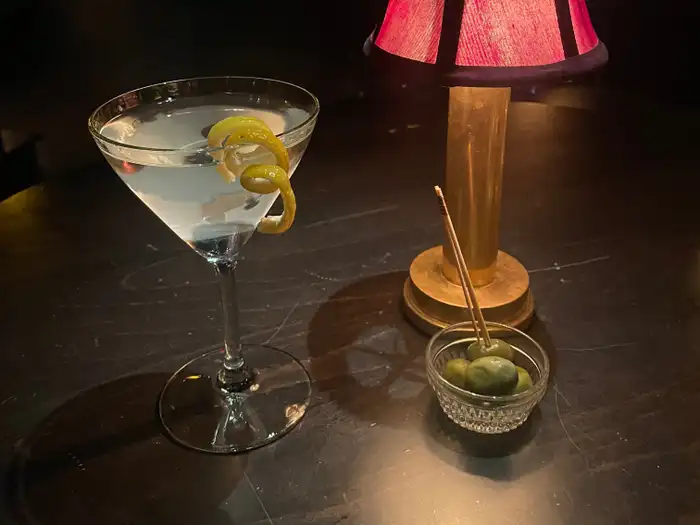
The Monkey Bar Martini at Monkey Bar in New York City.
Two blocks east of the Museum of Metropolitan Art in Manhattan is Monkey Bar, a dimly lit restaurant where bright yellow walls are adorned with paintings of primates playing cards and frolicking zebras. The establishment is connected to Hotel Elysée, a French-style hotel built in the 1920s that was once frequented by actor Marlon Brando.
The restaurant offers various options — including a $74 Añejo Negroni — but we tried the $34 Monkey Bar Martini. The menu’s description listed only four ingredients: Ki No Bi gin, Dolin dry vermouth, Castelvetrano olives, and a lemon twist. The olives were served in a small bowl on the side while the bartender fastened the lemon twist on the martini glass.
Some gin-based cocktails have earthy flavors, but a Monkey Bar employee told B-17 the signature drink leaned toward floral, fragrant notes instead. After one sip, we couldn’t have agreed more.
The Monkey Bar Martini’s floral notes were reminiscent of a garden, making it a great summer drink for gin enthusiasts. However, the martini was too dry for our tastes and the floral notes became overwhelming halfway through the cocktail.
Although we wouldn’t purchase the drink again, we understand how gin lovers might justify the high price point. Ki No Bi gin is a top-shelf alcohol distilled in Kyoto, Japan, where the distillery was named International Gin Producer of the Year in 2018.
People who like dry martinis and are willing to pay for high-quality gin will enjoy the Monkey Bar Martini, but a single glass and four olives for $34 is a bit steep for us.
ILIS, New York City: $50
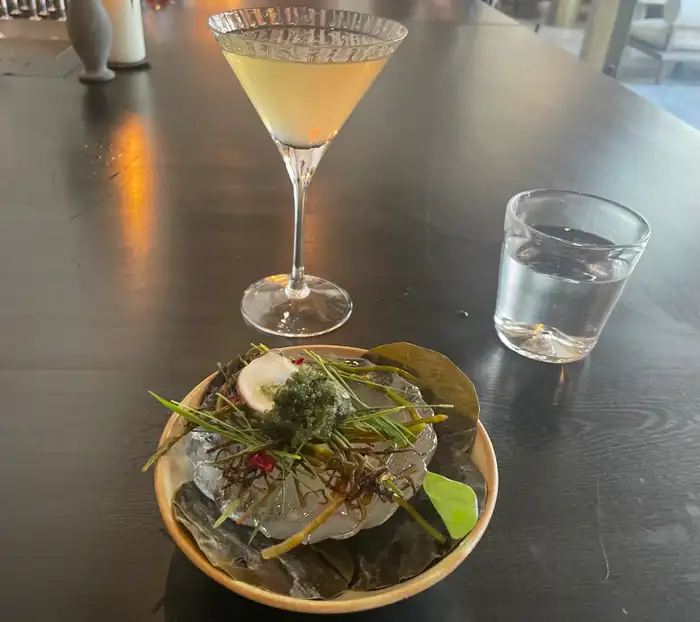
The Ocean Martini at ILIS in New York City.
Next, we traveled to Brooklyn’s Greenpoint neighborhood to visit ILIS, a spacious restaurant with an open firewood kitchen at the center and contemporary artwork on the walls.
Since opening in October 2023, the restaurant has quickly developed a reputation in the city for its elaborate cocktails and sustainable ingredients. Earlier this year, the restaurant’s Citrus Martini garnered shout-outs in major publications like Food & Wine and Grub Street.
We initially planned to try the viral $45 Citrus Martini but soon realized the drink was out of season and no longer on the menu. Instead, we tried ILIS’s $50 Ocean Martini. The menu listed five ingredients: Ki No Bi K Edition Gin, Iichiko Frasco Shochu, Acid Sugar Kelp, Sea Bean Brine, and beachcomber produce.
“The Ocean Martini is somewhere between a Gibson and a dirty martini,” Bobby Murphy, ILIS’s Bar Director, told B-17.
Murphy acknowledged that some people might balk at the $50 price point, but that’s before they realize all the perks that come with the drink. We wholeheartedly agree.
A bartender served me a mammoth martini glass before pouring my cocktail tableside, which earned points in my book. The glass appeared big enough to hold at least two portions, which made me feel better about the expense.
Unsurprisingly, the martini tasted like the ocean, but in the best way possible — each sip felt like soaking in the sun near the sea while a breeze flitted by. It was one of the most unique flavors we’ve ever encountered.
The foraged ingredients accompanying the martini helped justify the price, even if we were hesitant to taste them initially. The bowl that was served on the side of the drink contained plant-based items like sea caviar, oyster leeks, cured kombu, and sea beans.
“One of our cooks came in, and he foraged around 10 pounds of sea beans,” Murphy said. “It was like Scrooge McDuck diving into his gold and coins. I was like, ‘I can’t believe we have all these.'”
Murphy said he was a bit nervous about releasing the Ocean Martini after the success of the Citrus martini, but he’s received good feedback from customers so far. He said the restaurant has about 40 portions left after selling around 100 glasses of that cocktail.
“At the bare minimum, I hope you enjoy it and feel the value in it,” he said. “Like, ‘that was very interesting and I’m not unhappy about purchasing that.'”
Ordering the Ocean Martini is an experience that invites guests to expand their pallets. Given the pour size and the snack, we’d say the price for the Ocean Martini is worth it.



